Miss Pittsburgh 1926
Thelma Williams wins "Miss Pittsburgh" Honors
By Andrew Capets
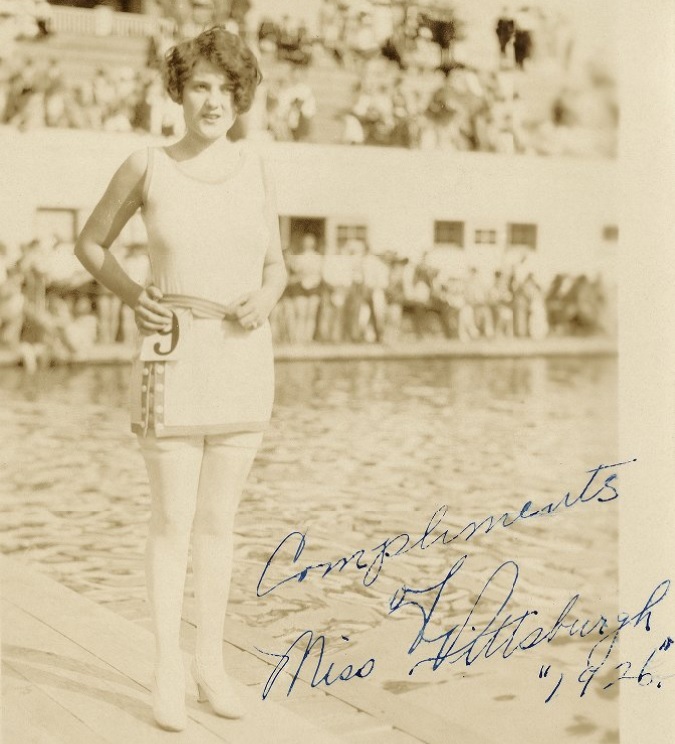 Thelma M. Williams of Trafford was crowned “Miss Pittsburgh 1926,” giving her the opportunity to compete in the Miss America Pageant held in Atlantic City, New Jersey. The Pittsburgh contest was organized by the “Greater Movie Season” which also gave Thelma the prospect for a “screen test” before associates of Universal Pictures in Washington DC, as well as “movie and stage tests” in New York City. However, the August 1926 crowning of “Miss Pittsburgh” did not come without controversy, and the heightened amount of attention given to this 19-year-old former schoolteacher led to details about her private life that appeared in newspapers for many years, revealing a dramatic set of events and a tragic end to her life.
Thelma M. Williams of Trafford was crowned “Miss Pittsburgh 1926,” giving her the opportunity to compete in the Miss America Pageant held in Atlantic City, New Jersey. The Pittsburgh contest was organized by the “Greater Movie Season” which also gave Thelma the prospect for a “screen test” before associates of Universal Pictures in Washington DC, as well as “movie and stage tests” in New York City. However, the August 1926 crowning of “Miss Pittsburgh” did not come without controversy, and the heightened amount of attention given to this 19-year-old former schoolteacher led to details about her private life that appeared in newspapers for many years, revealing a dramatic set of events and a tragic end to her life.
Just days after being crown “Miss Pittsburgh 1926,” other title aspirants who lost the contest took steps through a Pittsburgh attorney to protest her eligibility. They did not necessarily act to have Williams barred from the contest, as much as they were protesting the “laxity of rules that allowed entrants from districts distant from that which the contest was held.” Thelma told a Pittsburgh Post-Gazette reporter, “While it is true that I was born and raised at Port Matilda, Centre County, nevertheless I have been making my home with my sister in Trafford on and off for the last three years. Further, I applied for a position as a Pittsburgh schoolteacher in April 1925. So, you see, I really must consider Trafford as my residence and preference for a home, since living there so much.” Ultimately, the pageant officials stood behind their decision to allow Thelma to compete in the sixth Miss America pageant held at the Million Dollar Pier in Atlantic City on September 10, 1926.
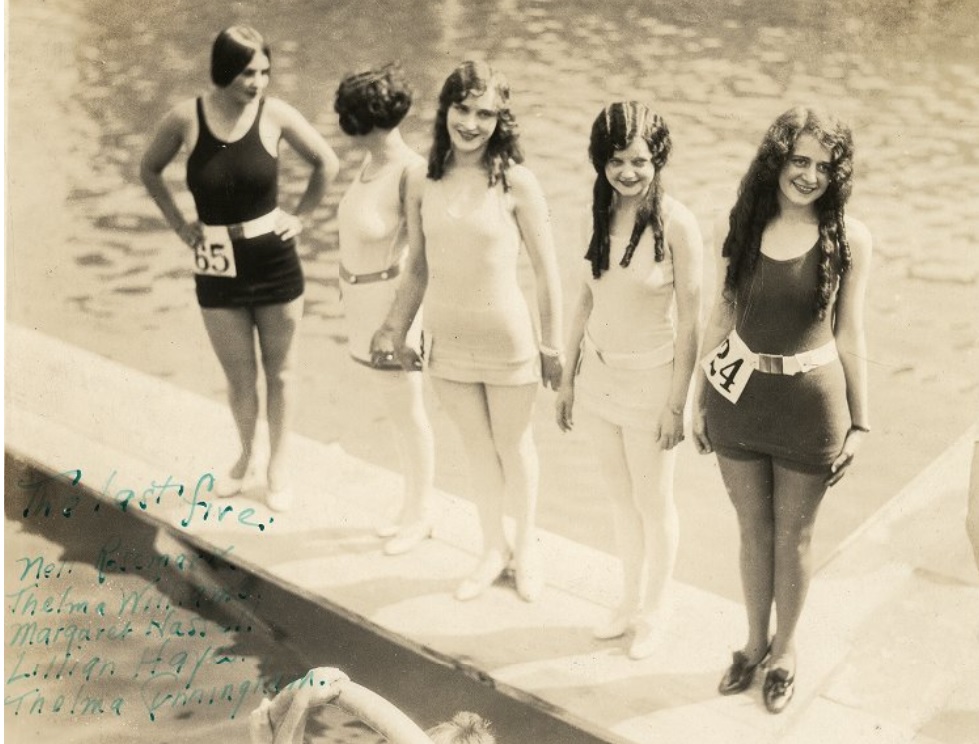
Set in the backdrop of the roaring twenties and the days of prohibition, the Pittsburgh beauty pageant was held at the Willows in Oakmont, PA, an establishment known for fine dining that included a night club that once featured many big-name bands of the day. "The last five" (photo above) were (L-R) Nell Rosemark, Thelma Williams, Margaret Hassell, Lillian Hayes, and Thelma Cunningham. Rosemark, Hassell, and Hayes would later join contestant Virginia McAdams in contacting Pittsburgh Attorney O. Hicks Friedman to complain about the contest rules. Had the pageant organizers agreed with the women, Miss Northside Helen Fusco (contestant #68) would have represented Pittsburgh in the “Seashore Pageant.”
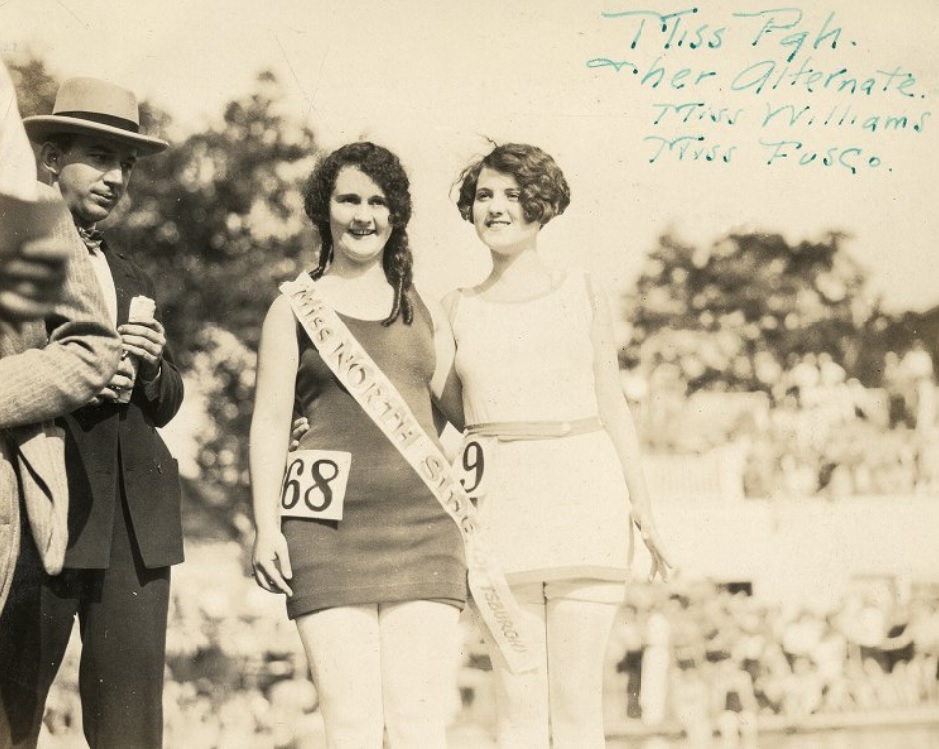
Thelma was living with her sister Mildred Briney, and brother-in-law Frank Briney, in the IOOF building located today at the corner of 4th Street & Duquesne Avenue in Trafford. Despite the protests, Price Mansfield, chairman of the Greater Movie Season committee, backed Thelma Williams as the victor and allowed her to continue on tour as “Miss Pittsburgh.” Thelma left her “preferred home” of Trafford for a pageant promotional tour with the support of Trafford’s local officials. Trafford Burgess Elmer Henderson joined other council members, along with her sister and chaperon, Mildred, in a celebratory send-off parade that led a caravan through the communities of Pitcairn, Wilmerding, Turtle Creek, East Pittsburgh, Forest Hills, Wilkinsburg, East Liberty and downtown Pittsburgh. Her first stop on the pageant tour was in Washington DC, at the Rialto Theatre, where she met with other beauty contestants for a public stage appearance. Accommodations for the contestants were made at the fashionable Villa Roma resort where Thelma stayed with her sister. Philadelphia was next on the tour agenda before the group headed to the four-day pageant event held in Atlantic City.

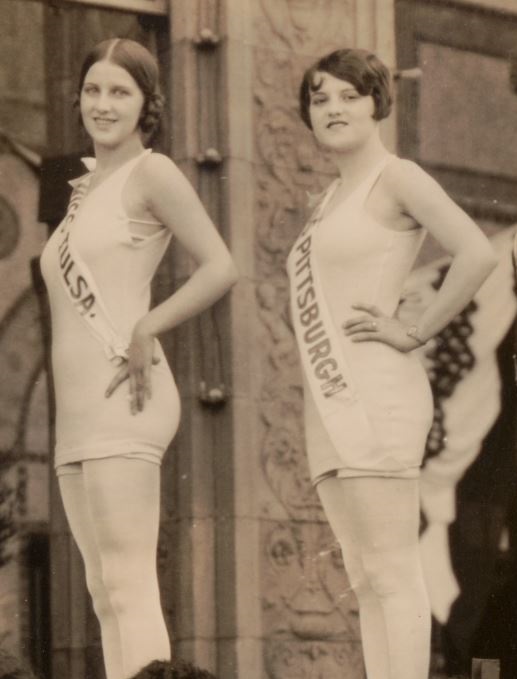
Thelma and 62 of the 73 other beauty contestants posed for this pageant photo shown above. Trafford’s Thelma Williams is wearing her Miss Pittsburgh sash standing to the right of the ultimate winner of the 1926 Miss America pageant, Norma Smallwood, “Miss Tulsa of 1926.” After completing a final “screen test” in New York City, Thelma returned to Pittsburgh and was photographed on September 21, 1926, with Pittsburgh Mayor Charles H. Kline, hand delivering a letter from Will Hays, the president of the Motion Picture Producers and Distributors of America. Hays once held the position of chairman of the Republican National Committee and Mayor Kline was the last Republican to be elected into office as Mayor of the City of Pittsburgh.
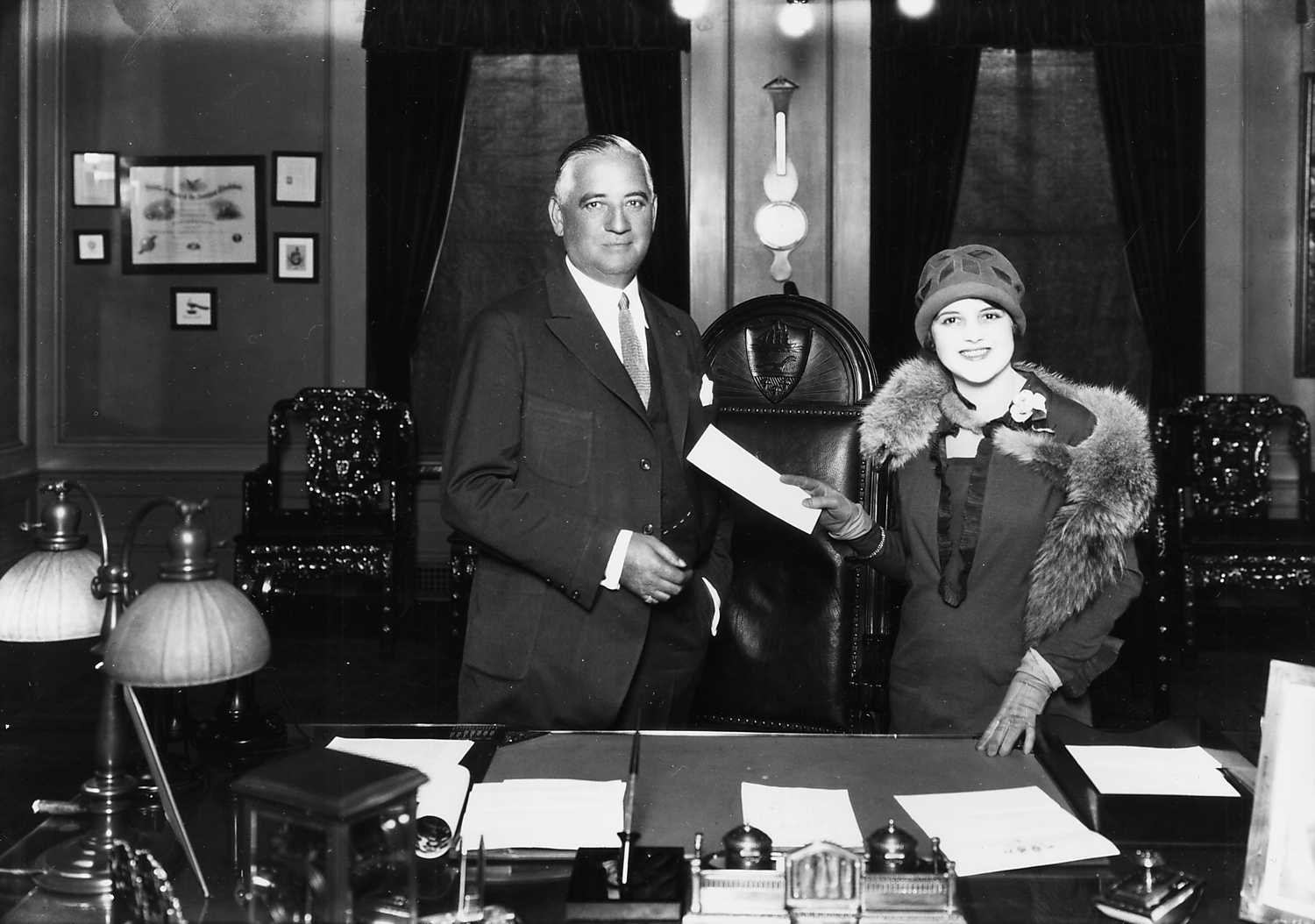
Five days after this photograph was taken, Thelma secretly got married in Greensburg, PA to Jesse W. Gray, a gentleman whom she had met while they were both working as school teachers in Centre County. The couple kept their marriage quiet while Thelma made various promotional appearances in the Pittsburgh area. Using her title as “Miss Pittsburgh,” she appeared at events held at the Duquesne Gardens for the Gazette Times newspaper. She sold street car passes for the Pittsburgh Press Christmas Fund, and also represented the Willys-Overland Automobile Company at the 1926 Pittsburgh Auto Show.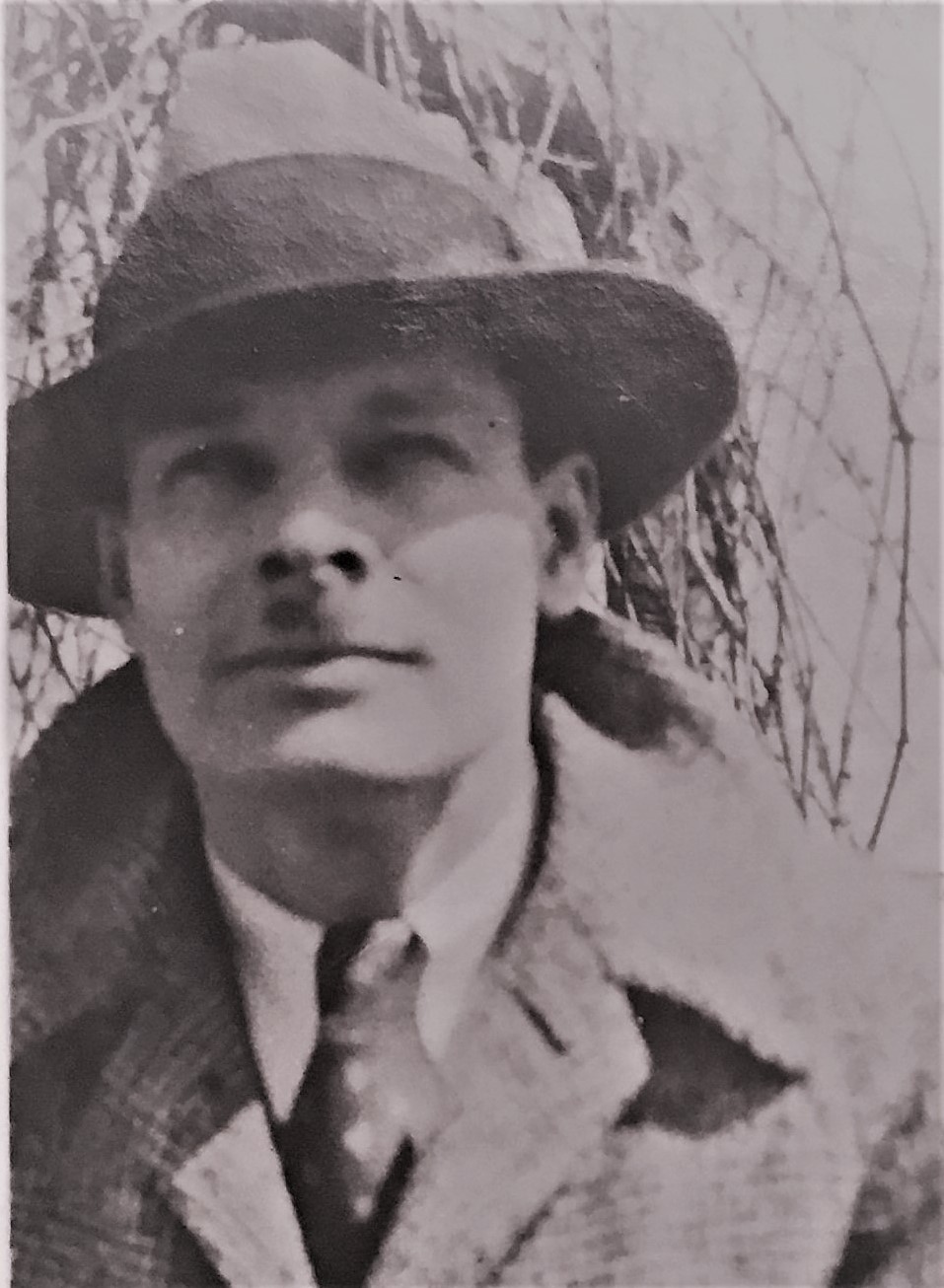 In December 1926, the couple was introduced to Royce Grimm (photo to the left) from Buffalo, New York, who offered to manage Thelma’s appearances and assist the couple in the promotion of a beauty review. By the spring of 1927, Thelma was traveling with Royce Grimm to places like New York, Ohio, Indiana, and Michigan. Her husband Jesse took up a job at the Westinghouse Foundry in Trafford while Thelma travelled.
In December 1926, the couple was introduced to Royce Grimm (photo to the left) from Buffalo, New York, who offered to manage Thelma’s appearances and assist the couple in the promotion of a beauty review. By the spring of 1927, Thelma was traveling with Royce Grimm to places like New York, Ohio, Indiana, and Michigan. Her husband Jesse took up a job at the Westinghouse Foundry in Trafford while Thelma travelled.
Thelma was apparently not yet ready to settle for the “domestic life,” and to the dismay of her husband, she was spending more time on the road with Royce. It wasn’t long before she asked her husband Jesse for a divorce. On March 9, 1928, the surprising story of the secret marriage and arrest of “Miss Pittsburgh” made front page news of the Pittsburgh Press. Thelma was placed in a Detroit jail for three days while authorities investigated allegations of Thelma being involved in a “Fake Beauty Contest” scheme allegedly perpetrated by Royce Grimm. The Pittsburgh Post-Gazette reported that a young woman from Altoona, PA, named Helen Kish, appeared before a grand jury in Buffalo, NY claiming that Grimm paid her to appear in a beauty contest as “Miss West Virginia,” even though she had never been to that state. Grimm was also questioned by authorities for possible violation of the “Mann Act,” also known as the “White-Slave Traffic Act,” a federal law that made it a felony to engage in the interstate transport of "any woman or girl for the purpose of prostitution or debauchery, or for any other immoral purpose." It was believed that Thelma’s mother, Nancy Williams, was the one who contacted authorities in Detroit causing Thelma to end up in jail while the facts were sorted out. It was also about this time that her parents first discovered that their daughter got secretly married to Jesse Gray.
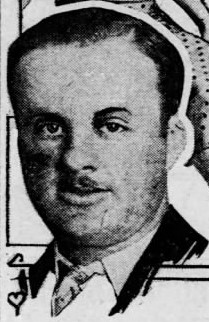 About a month after this incident, Jesse Gray (photo seen here on the left) brought a lawsuit against Royce Grimm suing him for $100,000. Under a common law tort, Gray was claiming "alienation of affection" and seeking damages against Grimm because he was the one responsible for damaging the couple's marriage, causing Thelma to ask her husband for a divorce. Ultimately, the out-of-state investigations were resolved with the authorities and there was no further mention in the newspapers about the alleged “fake beauty contest” or that Royce was in violation of the “Mann Act.” In fact, only three months later, in June 1928, Thelma and Royce were booked to hold a beauty contest in Glen Falls, NY, at the Rialto Theatre. The theater management was so pleased with the event that they published an advertisement thanking the local businesses for supporting the contest, and thanked the couple, ”who contributed their time and efforts in helping to make a success of this great entertaining feature.” The next month, the couple was hired by the Washington County Agricultural Society in New York to conduct another beauty contest at the County Fair. Even Thelma’s mother travelled from Western PA to spend the remaining summer with her daughter. Later that summer, however, Thelma’s private life was again made public when the details of her divorce from Jesse Gray appeared in the newspaper. Thelma appeared before a judge in Greensburg and no defense was made in charges that Jesse Gray “had chocked and beaten her.” Thelma’s divorce from Jesse was granted.
About a month after this incident, Jesse Gray (photo seen here on the left) brought a lawsuit against Royce Grimm suing him for $100,000. Under a common law tort, Gray was claiming "alienation of affection" and seeking damages against Grimm because he was the one responsible for damaging the couple's marriage, causing Thelma to ask her husband for a divorce. Ultimately, the out-of-state investigations were resolved with the authorities and there was no further mention in the newspapers about the alleged “fake beauty contest” or that Royce was in violation of the “Mann Act.” In fact, only three months later, in June 1928, Thelma and Royce were booked to hold a beauty contest in Glen Falls, NY, at the Rialto Theatre. The theater management was so pleased with the event that they published an advertisement thanking the local businesses for supporting the contest, and thanked the couple, ”who contributed their time and efforts in helping to make a success of this great entertaining feature.” The next month, the couple was hired by the Washington County Agricultural Society in New York to conduct another beauty contest at the County Fair. Even Thelma’s mother travelled from Western PA to spend the remaining summer with her daughter. Later that summer, however, Thelma’s private life was again made public when the details of her divorce from Jesse Gray appeared in the newspaper. Thelma appeared before a judge in Greensburg and no defense was made in charges that Jesse Gray “had chocked and beaten her.” Thelma’s divorce from Jesse was granted.
Shortly after the divorce, Thelma Williams and Royce Grimm were married. In May 1929, the couple welcomed their first child, Royce Jr, followed by a daughter, Barbara, born in November 1930. In the spring of 1933, a Pittsburgh Press staff writer was curious about the life of “Miss Pittsburgh 1926” and wrote a story about her content family living in the suburbs of Hamburg NY. Thelma was at home raising their two children and Royce was working in an advertising department for a toy manufacturing company. In other news, later that same year, Thelma’s ex-husband, Jesse Gray was involved in an automobile accident on July 1, 1933 in which he suffered severe head trauma. Seven days later he was dead.
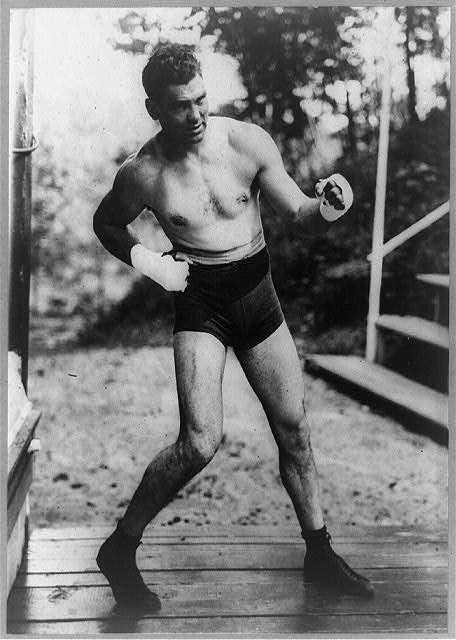 The next six years of Thelma and Royce’s life appeared to be rather quiet, and the couple remained out of the newspapers. Then, in January 1939, their story picks up again when Royce Grimm travelled to Rapid City, South Dakota to look into the possibility of investing in a mining operation located in the Black Hills of South Dakota. His two-day trip made the local papers because he was seen travelling in the company of legendary boxing champion Jack Dempsey, "The Manassa Mauler," the heavyweight champion from 1919 to 1926. Dempsey was said to be a personal friend of Royce Grimm. By the fall of 1939, Royce was advertising himself as Secretary and Treasurer of GFG, Inc. He entered into a contract to take over the mining operations of Gold Inc., and told a Sioux Falls, South Dakota newspaper that the company's miners had struck a 65-foot vein of ore, one of the largest ever struck in the Black Hills, and that a modern 150-ton mill was in process of erection.
The next six years of Thelma and Royce’s life appeared to be rather quiet, and the couple remained out of the newspapers. Then, in January 1939, their story picks up again when Royce Grimm travelled to Rapid City, South Dakota to look into the possibility of investing in a mining operation located in the Black Hills of South Dakota. His two-day trip made the local papers because he was seen travelling in the company of legendary boxing champion Jack Dempsey, "The Manassa Mauler," the heavyweight champion from 1919 to 1926. Dempsey was said to be a personal friend of Royce Grimm. By the fall of 1939, Royce was advertising himself as Secretary and Treasurer of GFG, Inc. He entered into a contract to take over the mining operations of Gold Inc., and told a Sioux Falls, South Dakota newspaper that the company's miners had struck a 65-foot vein of ore, one of the largest ever struck in the Black Hills, and that a modern 150-ton mill was in process of erection.
On June 4, 1940, Thelma and Royce welcomed their third child, Linda, a daughter born in a Rapid City, South Dakota hospital. The next month, July 1940, less than a year after Royce had taken over the mining operations, he and his associates were named in a civil lawsuit where a local doctor had invested in the company but never received his stock certificates. The doctor wanted the money that he had invested to be returned, but the judge presiding over the case declared that the corporation was “insolvent and had no assets.”
 The next month, on August 20, 1940, Royce reported to police that his wife and 10-week old daughter were missing from their home since about 7 o'clock Monday morning. Local authorities searched the surrounding areas, but sadly, mother and daughter were found dead in the family car parked inside the garage of a vacant home. A rubber hose was attached to the car’s exhaust pipe and diverted the fumes into the car. Thelma was in the front seat with her baby found beside her in a wicker basket. Royce was quoted as saying that his wife had suffered a nervous breakdown since the birth of her last child. We cannot speculate on the reason Thelma decided to take her own life, but can only give the details which appeared in the newspapers at the time. Thelma, and daughter Linda, were buried in a single grave in the Mountain View Cemetery, Rapid City, South Dakota.
The next month, on August 20, 1940, Royce reported to police that his wife and 10-week old daughter were missing from their home since about 7 o'clock Monday morning. Local authorities searched the surrounding areas, but sadly, mother and daughter were found dead in the family car parked inside the garage of a vacant home. A rubber hose was attached to the car’s exhaust pipe and diverted the fumes into the car. Thelma was in the front seat with her baby found beside her in a wicker basket. Royce was quoted as saying that his wife had suffered a nervous breakdown since the birth of her last child. We cannot speculate on the reason Thelma decided to take her own life, but can only give the details which appeared in the newspapers at the time. Thelma, and daughter Linda, were buried in a single grave in the Mountain View Cemetery, Rapid City, South Dakota.
A year and a half after the death of his wife and daughter, Royce Grimm was arrested in Lock Haven, PA, in February 1942 accused of committing mail fraud in connection with the sale of stocks in his mining business. Royce was charged with the intent to defraud by making representations claiming he was backed by a number of prominent eastern capitalists including Jack Dempsey, Henry C. Forbes, Allan H. Gardiner, Babe Ruth and Connie Mack, all for the purpose of obtaining the contract with Gold, Inc. The government was contending he formed the corporation GFG Inc. to obtain money under false pretenses. Following a sixteen-day federal trial in which forty witnesses were call, including Jack Dempsey who appeared as a government witness, on September 18, 1942, Royce Grimm was acquitted of all charges.
At 40 years of age, and having just been cleared of federal fraud charges, it is unclear what Royce Grimm’s next venture became in his life. We know that he was remarried in 1945 to Marjorie Kovacs and the couple had two daughters, Gail and Wendy. After a long illness in 1981, Royce Grimm passed away in Henderson, NC, at the age of 78.
As an amateur historian, I try to be cognizant of the living relatives of the families that I research, and do not intend to bring dishonor to the family in these stories. If you have information that you would like to add or correct in this story, please contact me. I also think it is important to use this opportunity to remind anyone reading this article about the National Suicide Prevention Lifeline 1-800-273-8255 that provides free and confidential support for people in distress, and also offers prevention and crisis resources.
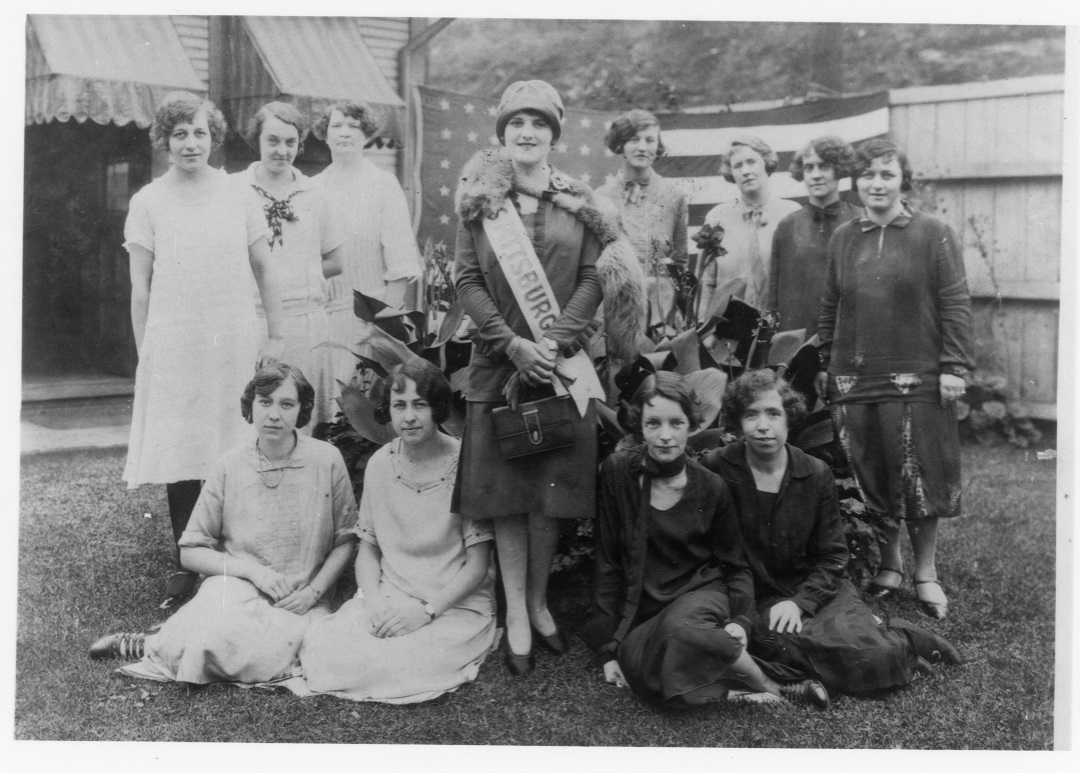
Interworks Office: Sitting (L-R) first woman unidentified, Ann Giglio Rosetti, Grace Dougherty, Ann Hughes. Standing (L-R) Alma Davis, Elizabeth Jones, Miss Kinney, Thelma Williams, Mary Bryan Capets, Inez Graham, Olive Kunkle, Miss Zynn.
On a personal note, I was surprised to discover, after having this photo above included in our Images of America: Trafford book released by Arcadia Publishing, that my great aunt Mary Bryan Capets, was standing directly behind, and to the right, of Thelma Williams in this 1926 publicity photograph. Mary Bryant, then working for Westinghouse Electric, was known to be a pretty good shortstop for the company's women’s softball team. Photo sources here.



